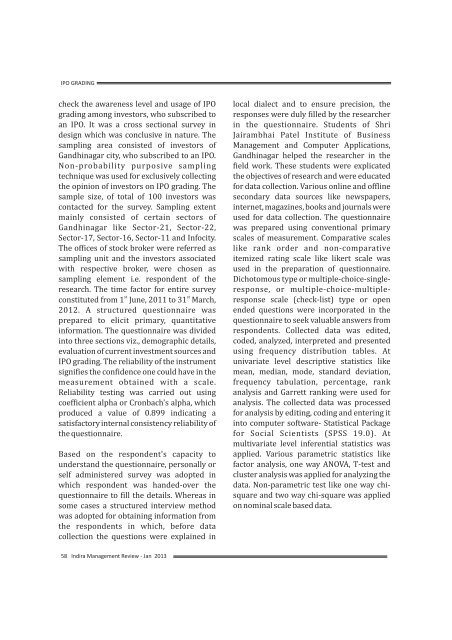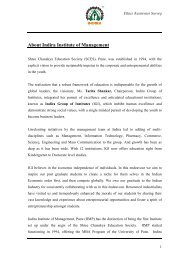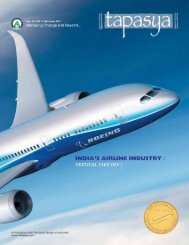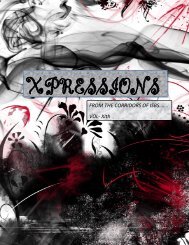IMR JAN 2013 - Indira Institutes
IMR JAN 2013 - Indira Institutes
IMR JAN 2013 - Indira Institutes
Create successful ePaper yourself
Turn your PDF publications into a flip-book with our unique Google optimized e-Paper software.
IPO GRADINGcheck the awareness level and usage of IPOgrading among investors, who subscribed toan IPO. It was a cross sectional survey indesign which was conclusive in nature. Thesampling area consisted of investors ofGandhinagar city, who subscribed to an IPO.Non-probability purposive samplingtechnique was used for exclusively collectingthe opinion of investors on IPO grading. Thesample size, of total of 100 investors wascontacted for the survey. Sampling extentmainly consisted of certain sectors ofGandhinagar like Sector-21, Sector-22,Sector-17, Sector-16, Sector-11 and Infocity.The offices of stock broker were referred assampling unit and the investors associatedwith respective broker, were chosen assampling element i.e. respondent of theresearch. The time factor for entire surveyststconstituted from 1 June, 2011 to 31 March,2012. A structured questionnaire wasprepared to elicit primary, quantitativeinformation. The questionnaire was dividedinto three sections viz., demographic details,evaluation of current investment sources andIPO grading. The reliability of the instrumentsignifies the confidence one could have in themeasurement obtained with a scale.Reliability testing was carried out usingcoefficient alpha or Cronbach's alpha, whichproduced a value of 0.899 indicating asatisfactory internal consistency reliability ofthe questionnaire.Based on the respondent's capacity tounderstand the questionnaire, personally orself administered survey was adopted inwhich respondent was handed-over thequestionnaire to fill the details. Whereas insome cases a structured interview methodwas adopted for obtaining information fromthe respondents in which, before datacollection the questions were explained inlocal dialect and to ensure precision, theresponses were duly filled by the researcherin the questionnaire. Students of ShriJairambhai Patel Institute of BusinessManagement and Computer Applications,Gandhinagar helped the researcher in thefield work. These students were explicatedthe objectives of research and were educatedfor data collection. Various online and offlinesecondary data sources like newspapers,internet, magazines, books and journals wereused for data collection. The questionnairewas prepared using conventional primaryscales of measurement. Comparative scaleslike rank order and non-comparativeitemized rating scale like likert scale wasused in the preparation of questionnaire.Dichotomous type or multiple-choice-singleresponse,or multiple-choice-multipleresponsescale (check-list) type or openended questions were incorporated in thequestionnaire to seek valuable answers fromrespondents. Collected data was edited,coded, analyzed, interpreted and presentedusing frequency distribution tables. Atunivariate level descriptive statistics likemean, median, mode, standard deviation,frequency tabulation, percentage, rankanalysis and Garrett ranking were used foranalysis. The collected data was processedfor analysis by editing, coding and entering itinto computer software- Statistical Packagefor Social Scientists (SPSS 19.0). Atmultivariate level inferential statistics wasapplied. Various parametric statistics likefactor analysis, one way ANOVA, T-test andcluster analysis was applied for analyzing thedata. Non-parametric test like one way chisquareand two way chi-square was appliedon nominal scale based data.58 <strong>Indira</strong> Management Review - Jan <strong>2013</strong>








